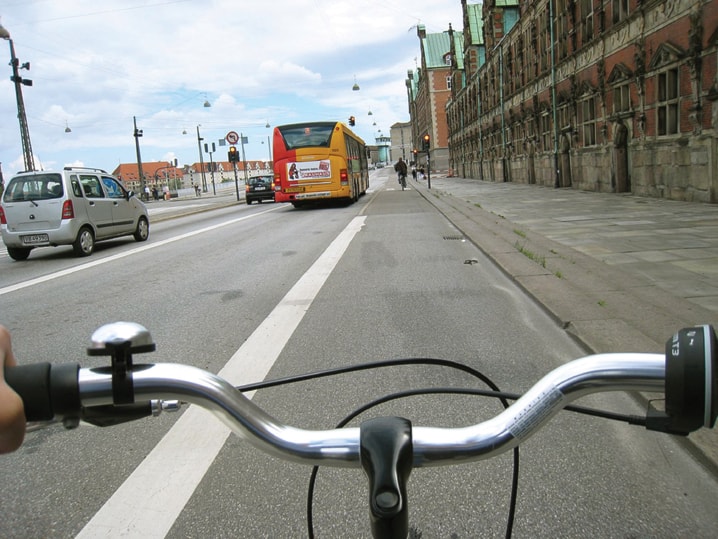This summer, bike lanes will make an appearance on about 20 km of selected routes on city streets. They will consist of painted lines on the streets, segregating an area for cyclists to ride.
Their arrival will mean both drivers and cyclists will need to change some behaviours and adjust their expectations of the rules of the road.
John Johnston is a member of the Red Deer Association for Bicycle Commuting, and an advocate for cyclists with the city’s planning group for transportation. He writes today to explain how the arrival of bike lanes will impact the way people move through the city this summer, and into the future.
Here are some answers to frequently asked questions:
Q: Why are we getting bike lanes now?
A: City Council has responded to requests by citizens who want to bicycle as a way of commuting and has taken a great interest in various forms of alternative transportation. There is a realization that our roads are engineered for individuals in cars and, whether intentionally or unintentionally, penalize those who prefer other options, such as pedestrians and cyclists.
Q: We already have bicycle lanes and they don’t look very well used.
A: The first bicycle lanes were “pilot” lanes. They were an experiment to see if anyone would use them and they were certainly fraught with problems. They were in odd places, weren’t connected to anything, and placed right beside bicycle paths. This time there has been a concerted effort by city engineers, stakeholder groups, and cyclists to come up with a more complete and well-thought out plan.
Q: Do bike lanes increase cycling safety?
A: Yes. Although research shows that bicycle accidents go up with the introduction of bike lanes, that is because there is also more bicycle usage. The number of accidents per kilometer cycled actually goes down as the number of cyclists goes up, according to a study by Dr. Lon Soren of cyclists in Copenhagen. There are, in fact, several studies that show bike lanes both improve safety and result in more predictable behavior by cyclists.
Q: What type of behavior should be expected of cyclists?
A: Cyclists are expected to follow the same laws as motorists. The Red Deer Primary Care Network suggests specifically that cyclists:
• Be aware of traffic around you.
• Ride in a straight line on the right hand side of the road.
• Keep your distance from parked cars to avoid opening doors.
• Obey all traffic signs and signals.
• Be visible.
Q: What type of behavior should be expected of motorists?
A: The Red Deer Primary Care Network suggests specifically that motorists:
• Be aware of cyclists on the road.
• Watch for bikes before opening your door.
• Be aware of cyclists at intersections and when entering a roadway.
• Don’t drive, stop or park on Bike Lanes.
Q: Can cars be parked in bike lanes?
A: No. Cars are not to be driven, stopped, or parked in bike lanes.
Q: Why are bicycle lanes sometimes dashed?
A: This is to indicate to motorists that they may cross bicycle lanes at those points. For example, lanes may be dashed at intersections to allow cars to make right hand turns.
Q: What happens to bicycle lanes at bus stops?
A: The cyclist is expected to wait behind the bus until it moves, or to make a legal pass on the left. The cyclist should not try to pass the bus on the right because it could create problems with passengers disembarking.
Q: How does a cyclist make a left hand turn since the bike lane is at the far right?
A: The cyclist can act as either a pedestrian or a motor vehicle. As a pedestrian, the bicycle should be walked through the pedestrian crosswalk. If operating as a vehicle, the cyclist should use the appropriate hand signal and left turning lane.
Q: How can you give feedback to the City?
A: The City will be surveying the public later this summer on the new bike lanes.
